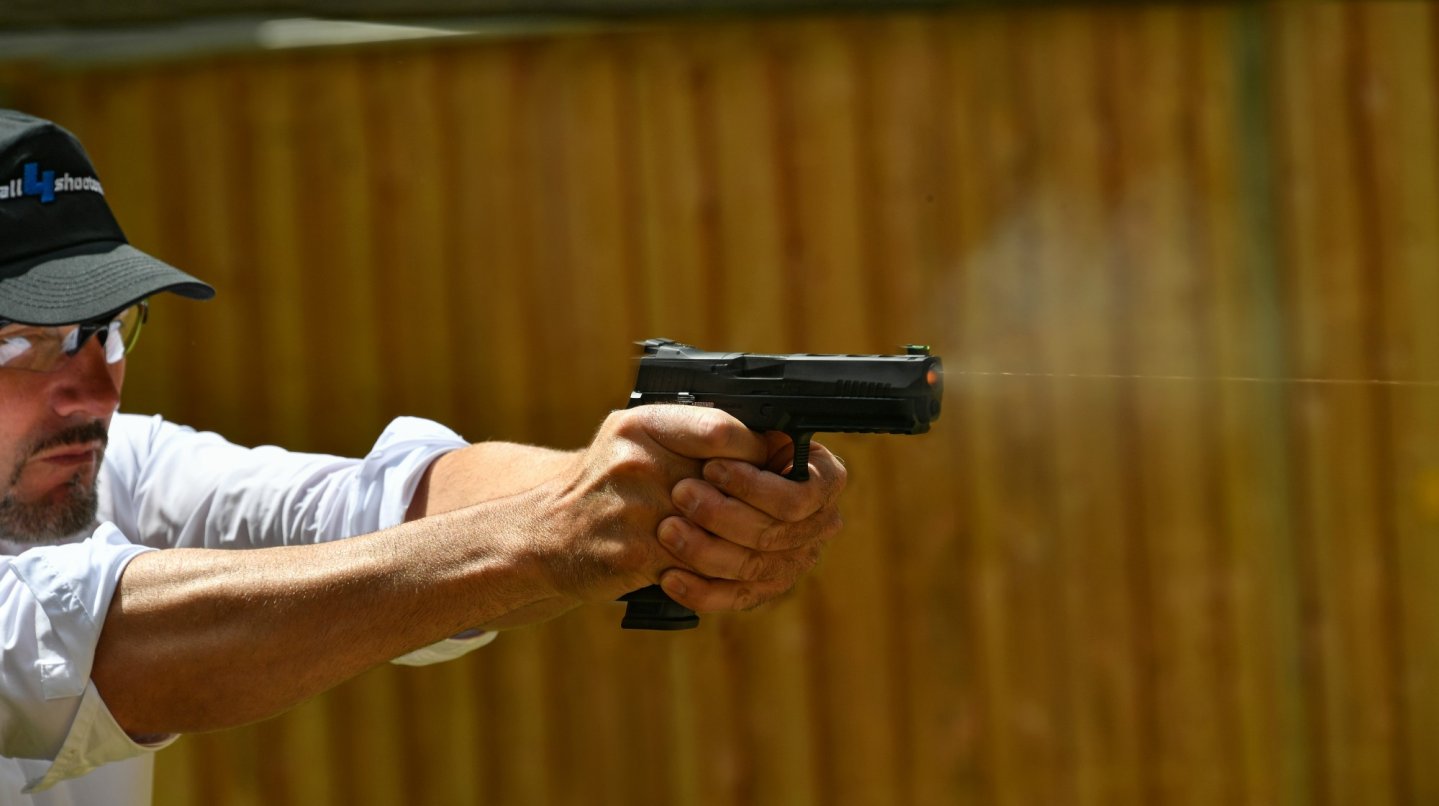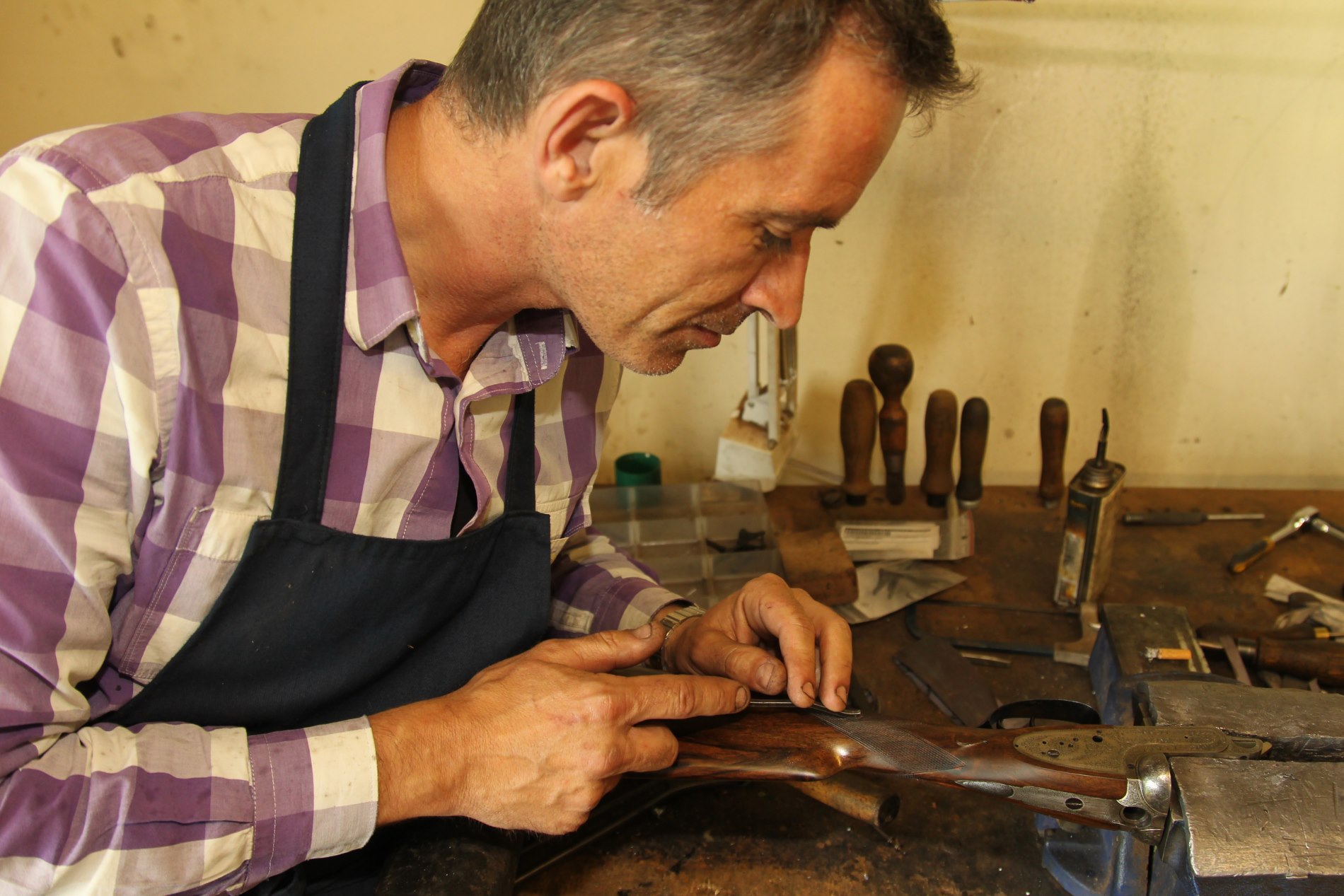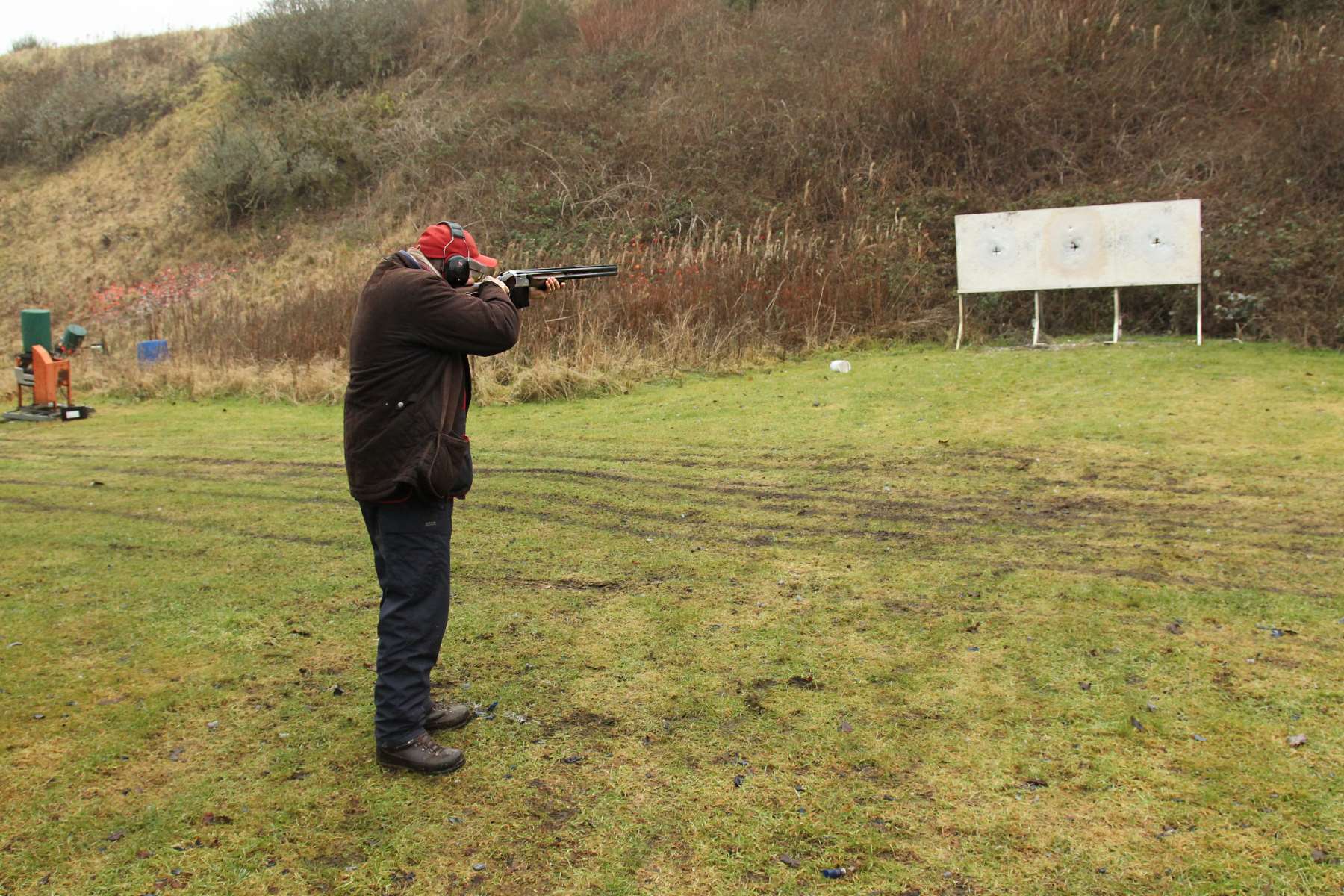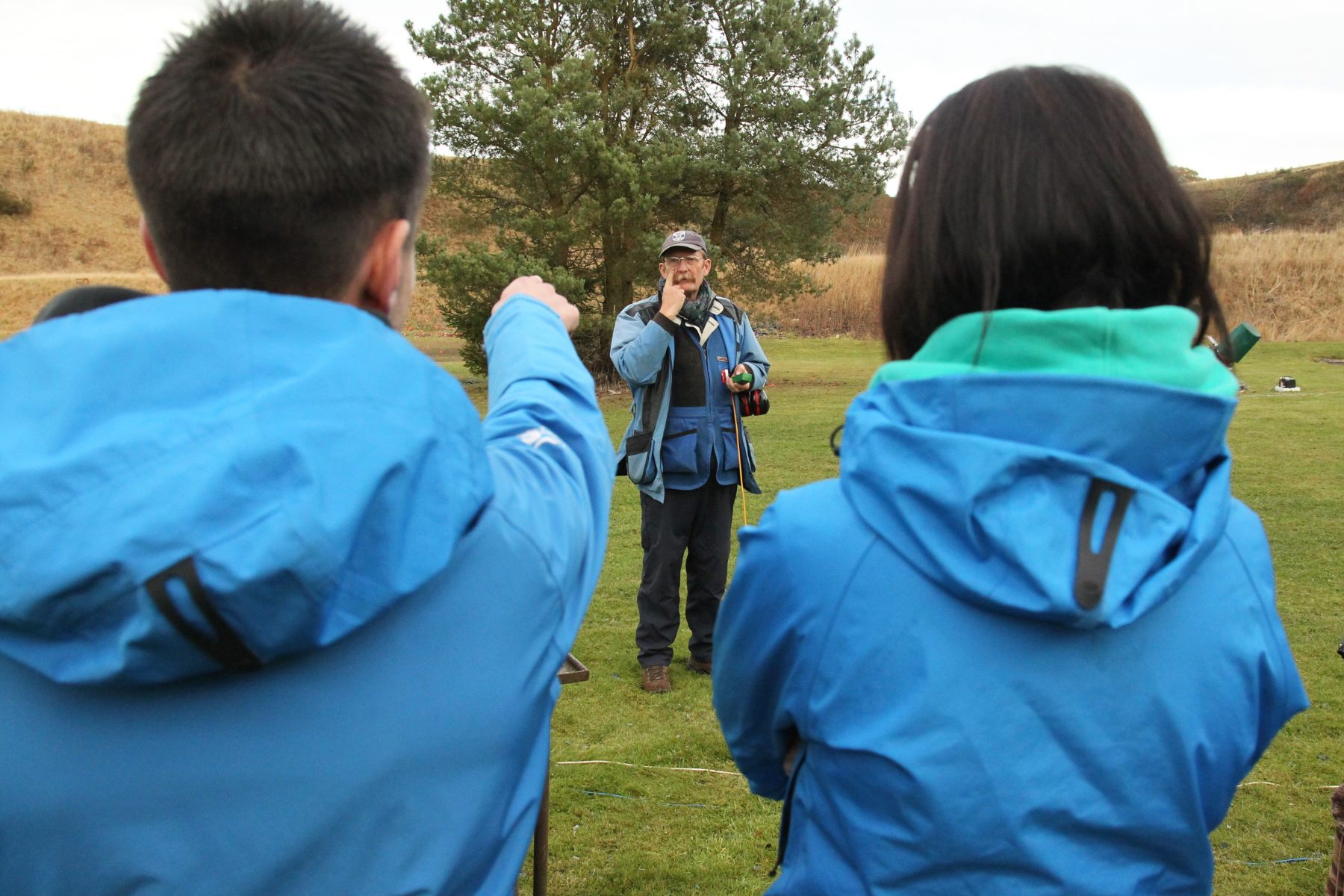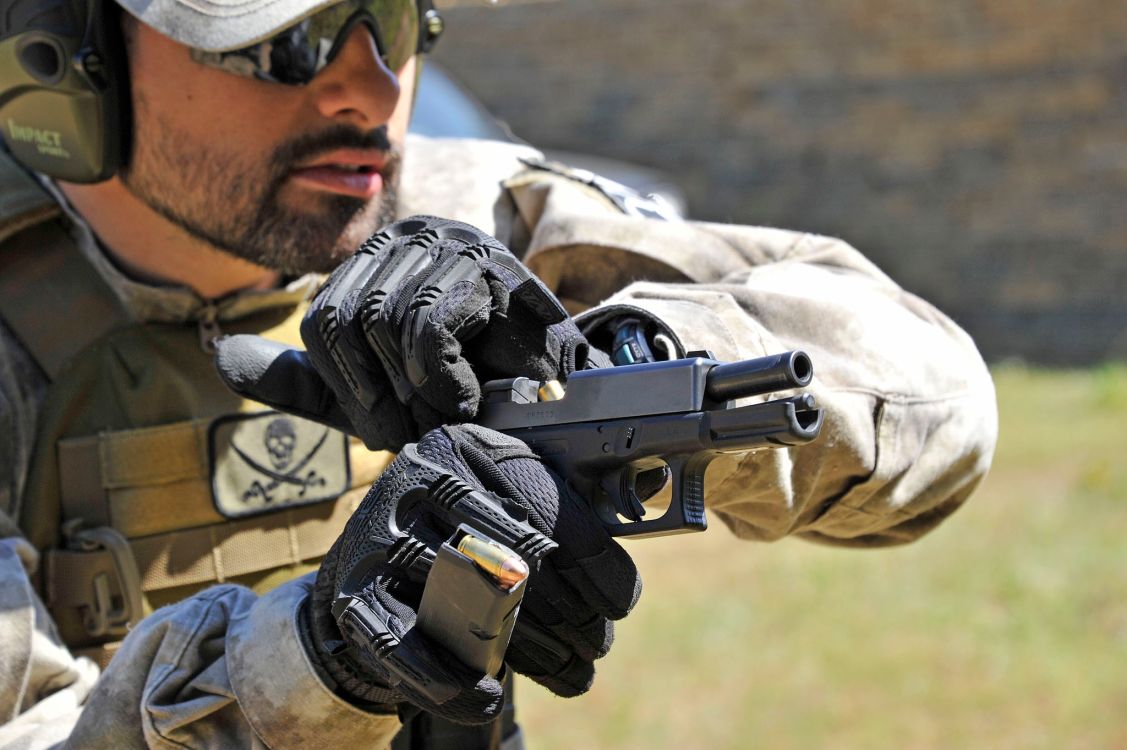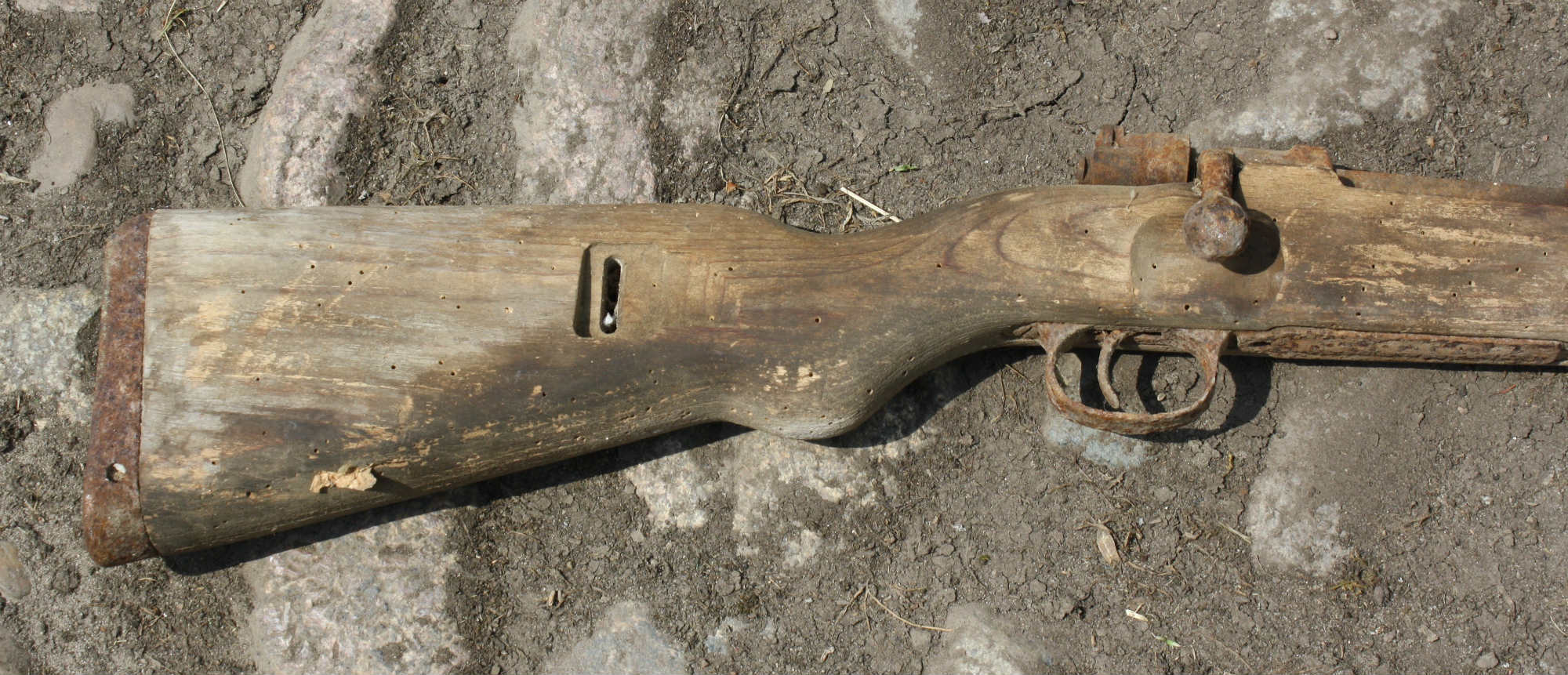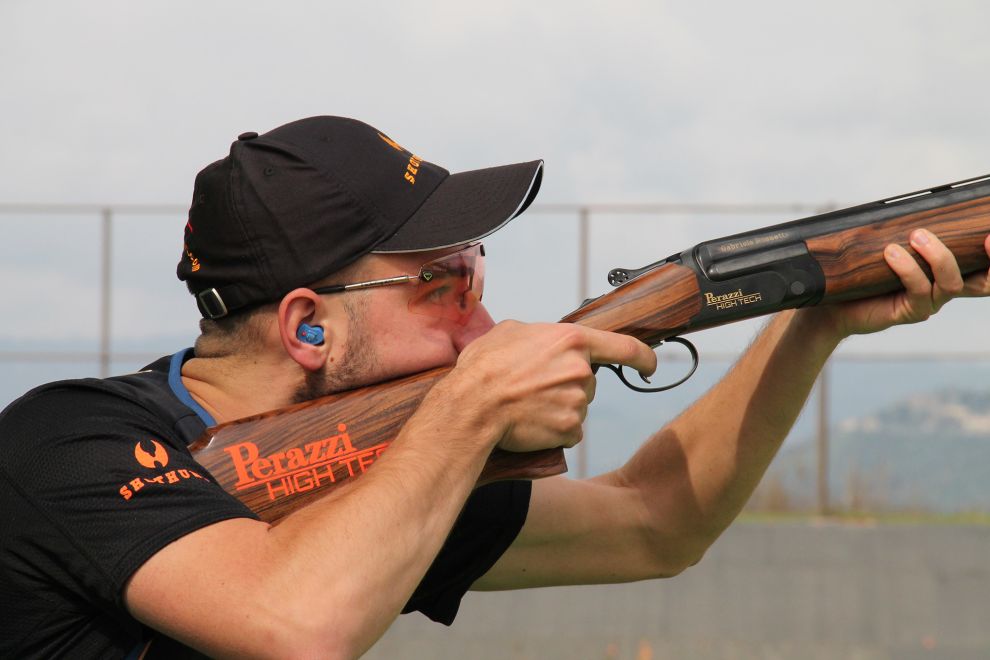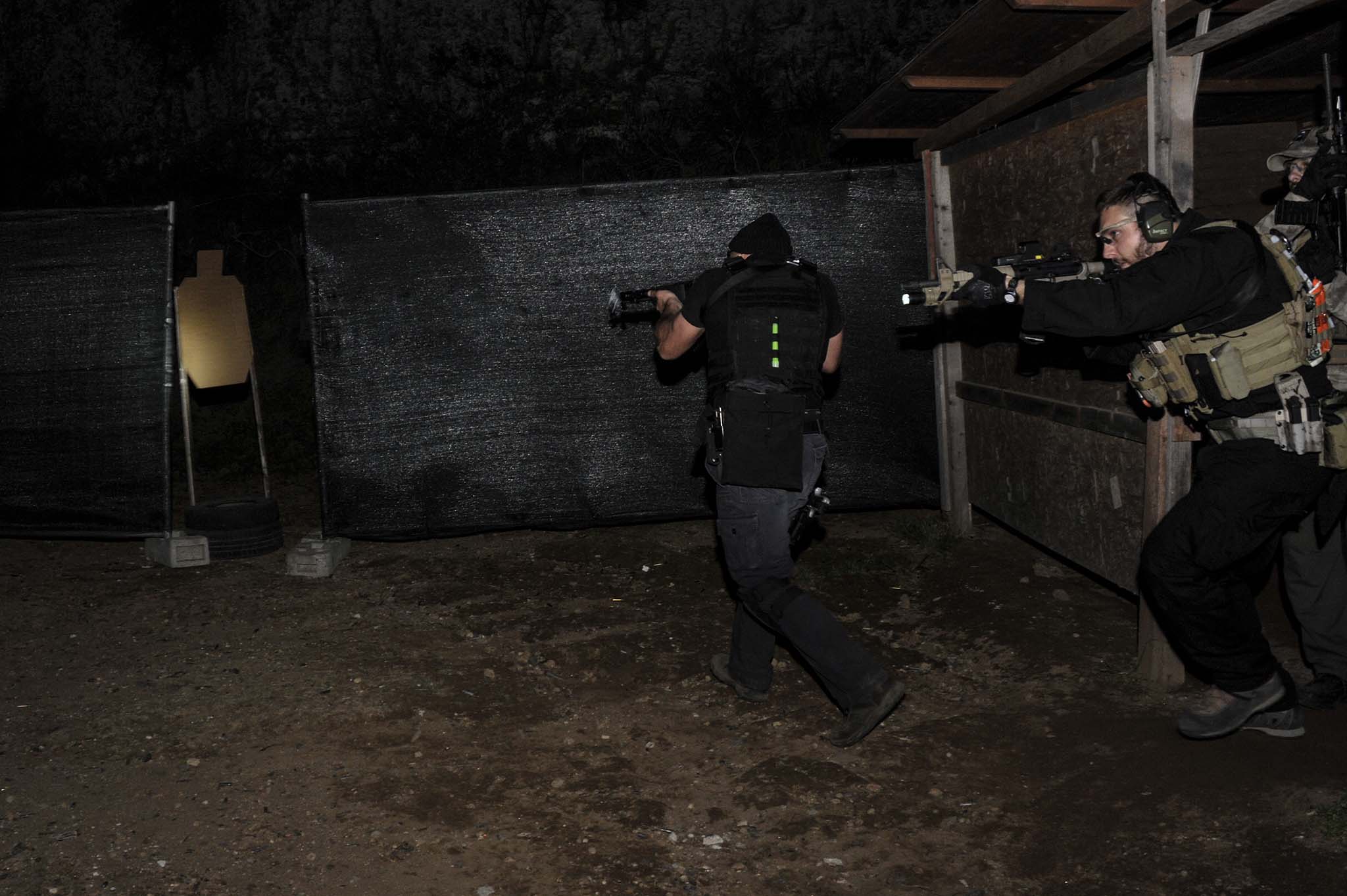To succeed as a sports shooter there are several factors to consider. Gun, optics and ammunition not only have to harmonize with each other, but they also must be designed to meet the shooter’s requirements. But all these aspects are useless if the shooter's technique is not right. That's why we'd like to give you an insight into the world of dynamic handgun shooting and IPSC shooting techniques. Starting with tips and advice for the correct grip.
The grip attitude as a basis for the dynamic shooting technique
Everything starts with the right grip and therefore we want to open our special about IPSC shooting technique not only with an explanation about the "correct gun grip", but immediately cleaning up a common myth instead: recoil control – so essential for fast, accurate shooting –primarily relies on your hands. Neither an exaggerated "leaning forward" posture, nor the stretching of the elbows or tensing the shoulder muscles helps much for recoil control. Primarily, recoil is mainly controlled by hands. In addition to recoil control, a firm grip also helps to some extent over alignment errors. If side pressure is exerted on the trigger, i.e. the trigger is not moved straight backwards, hit placement drifts. If the gun is held with a sufficiently firm grip, alignment errors are less conspicuous.
The following elements make a good grip:
- The grip is as high as possible
- Large contact area with the gun
- The gun is held with the most enveloping possible grip
- Consistency
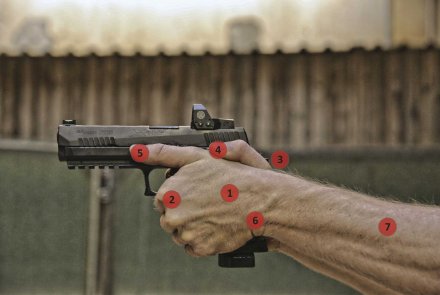
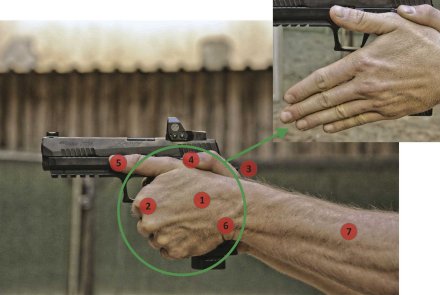
The right grip starts from the top!
First, it is important that the gun grip is as high as possible. Because the higher the grip – i.e. towards the barrel axis - the more control you have when firing. The easiest way to demonstrate this effect is to purposely lower the grip and fire some shots: muzzle deflection when firing increases dramatically. In addition to a high hand position it is crucial for good recoil control that as much of grip surface as possible is covered.
The hands should have as much contact with the gun grip as possible. Only in this way can the grip force be used effectively for recoil control. Specifically, the grip is constructed as follows: hold the pistol with the strong hand so that the thumb-index finger flexor area is directly under the grip spur. The index finger is outside the trigger guard along the frame and the remaining 3 fingers wrap the grip from the front. Ideally, you should feel some pressure on the middle finger (from the trigger guard) and in the crook of the thumb (from the handle spur) – this way you know that the hand is resting high on the grip. If you look at the grip from the weak side, you will find a gap between the fingertips and the root of the thumb. Into this gap the weak hand is placed. For this purpose, the weak hand index finger passes under the trigger guard and then the hand is rotated forward until the thumb root can be placed in the gap described above.
As with the strong hand you should also feel pressure on the index finger of the weak hand near the trigger guard. Furthermore, the fingertips should point towards the ground when opening the weak-hand. This ensures a sufficient pre-rotation of the wrist. Even the most inexperienced shooter will quickly realize that the more you hold on tight the less the gun moves when firing. Basically, the grip force is stronger. It helps us to control the gun.
60/40 and 70/30 IPSC-grip: the right amount of force is required...
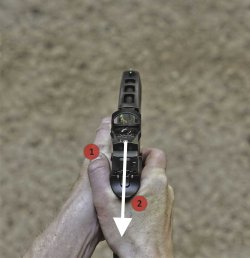
Nevertheless, there are also cases when too much force is exerted. Excessive force can cause tremors in some shooters. In addition, too tight a grip with the firing hand can lead to problems with alignment/manipulation. Based on the different tasks of the firing and weak hands, it is therefore advisable to consider them separately with regard to the correct use of force. As for the non-firing hand, it is quite realistic and practicable to exert the maximum force. Although fine motor skills suffer from this, this is not dramatic, since the non-firing hand is merely supporting. In particular, it is not involved in the alignment process. In the case of the firing hand, however, such a loss of fine motor skills would be quite problematic. Ideally, when firing the shooter moves only the trigger and nothing else.
However, this isolated trigger movement gets harder while increasing force, so it is basically advisable to loosen the grip with the firing hand and just "hold" the gun. This may well be one of the reasons why they talk about the 60/40 or 70/30 "IPSC grip" on several occasions. With regard to the fine motor skills it makes sense to grab the gun with the non-firing hand and the firing hand with different intensity. Put simply, the gun with the firing hand should be held about as tightly as if you wanted to hammer in nails with a hammer. With the non-firing hand, however, the weapon can be grasped as tightly as possible for the greatest possible recoil control. However, if you are in the fortunate position of being able to use the firing hand with force without sacrificing fine motor skills, you should do so in any case. The plus in recoil control is certainly worth it. In summary, we can therefore say that the gun should always be held with the greatest possible effort, as far as there are no negative side effects (such as loss of trigger control or premature, muscular fatigue).
Perfect pistol shooting: good results thanks to consistent grip
Let us now come to the last element of good shooting – consistency. Every time we reach for our gun, it should be done the same way. Consistency is in a sense even more important than the gripping force. Even under the greatest match or time pressure, consistency of gun handling must not suffer.
A simple trick to get yourself into a consistent grip technique is the application of marks on the hands using a felt-tip pen. For this purpose, the gun is first grasped with the correct hand position. Subsequently, a second person brings a line (or two lines) running from one hand to the other. When the gun is grasped again, it is possible to check its position by simply looking at the markings. If the lines match, the hand posture is ok. Otherwise it has to be corrected.

Incidentally, all these tips about the right grip attitude are interesting not only for passionate IPSC shooters, but in principle worth knowing and helpful to any handgun shooter and any shooting sports discipline. Just give it a try and you'll soon realize that you can perfect your pistol shooting this way.
Do you want to learn what kind of shooting sport is IPSC? Here's an overview of IPSC shooting.
Which IPSC shooting disciplines are there in the handgun division? Here is an overview of the pistol and revolver divisions.
The largest shooting school in the world: the SIG Sauer Academy.


